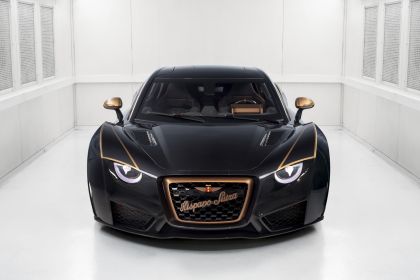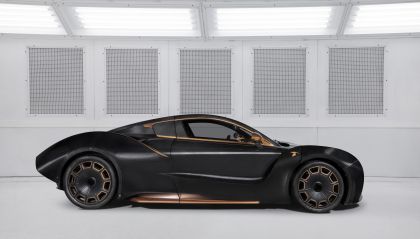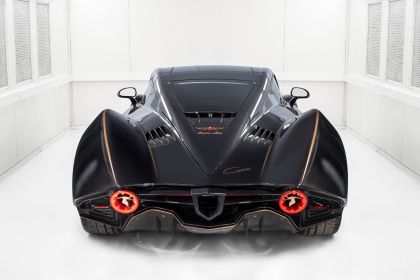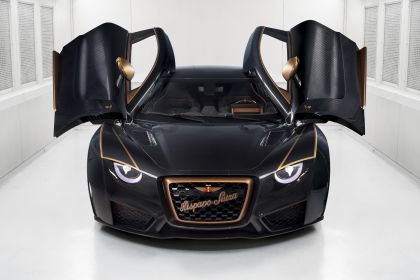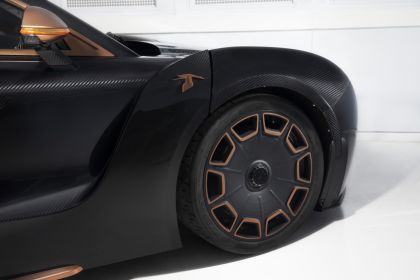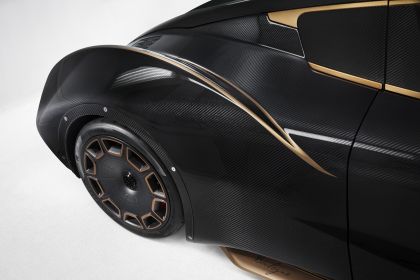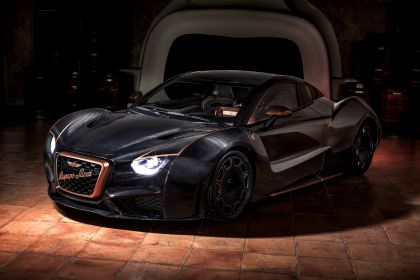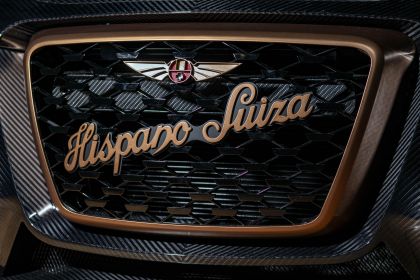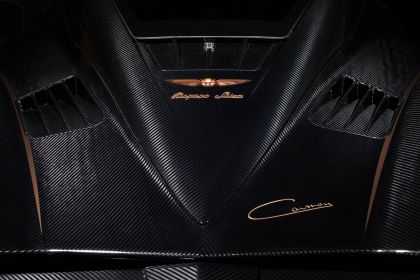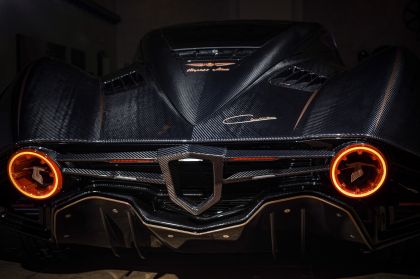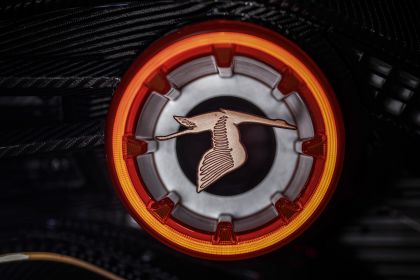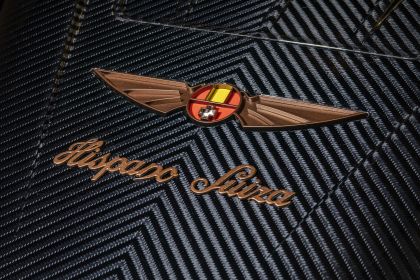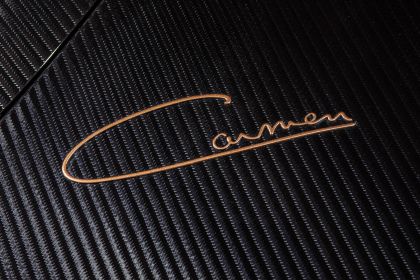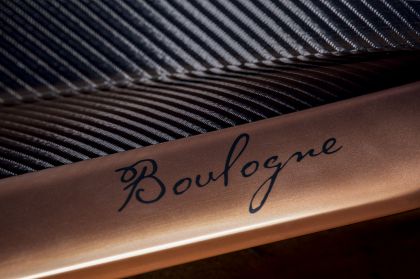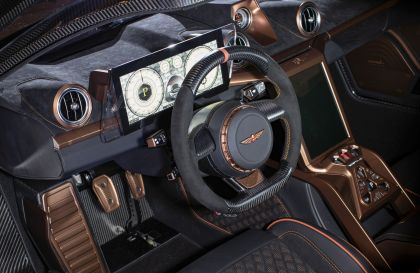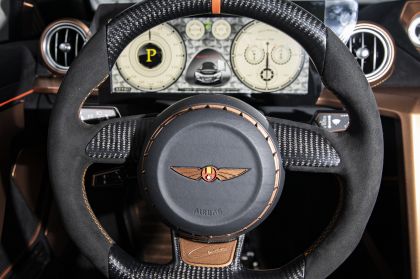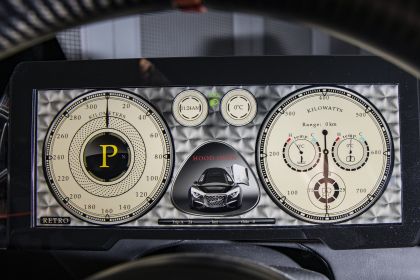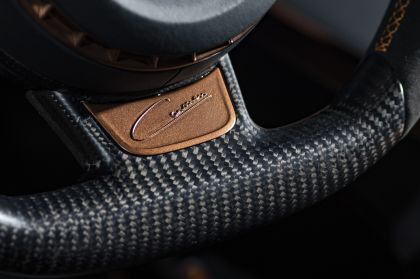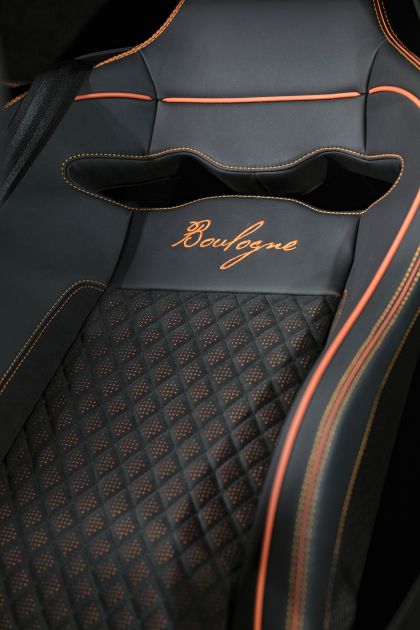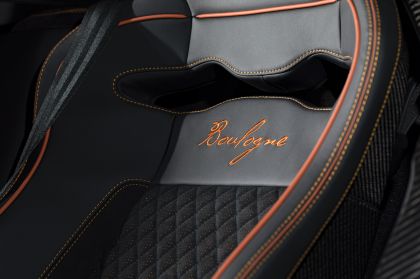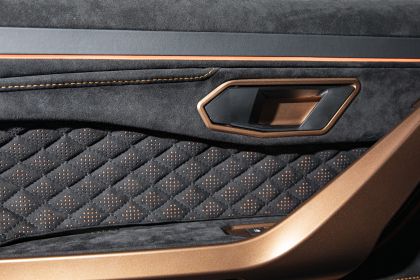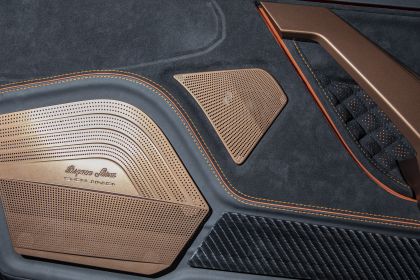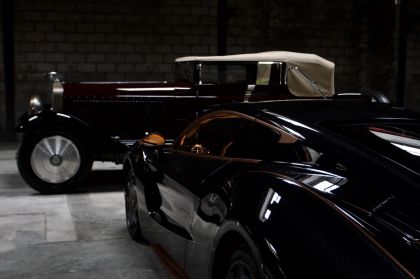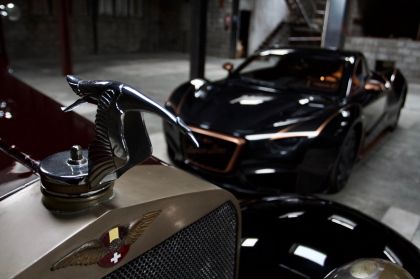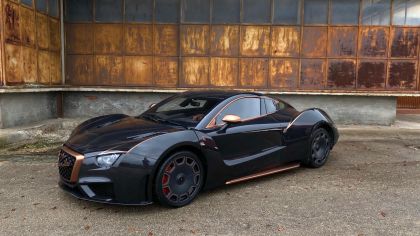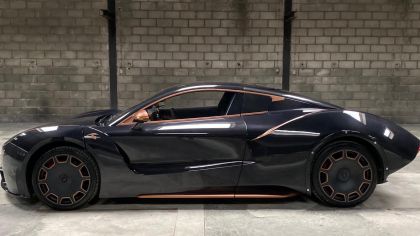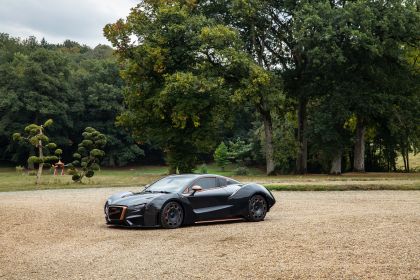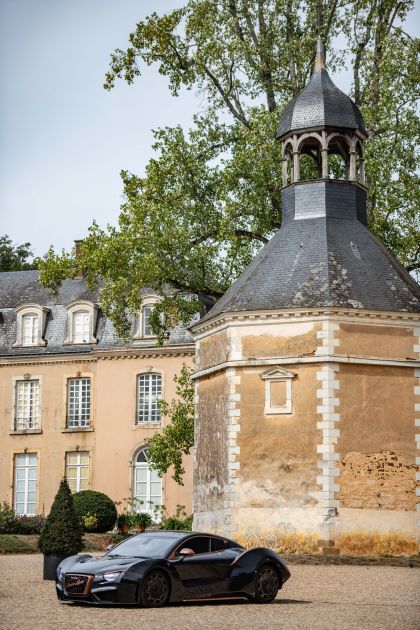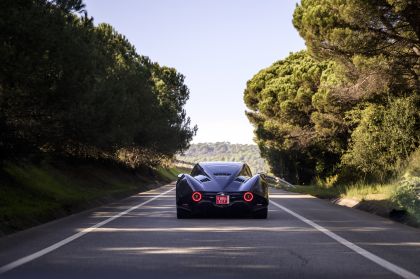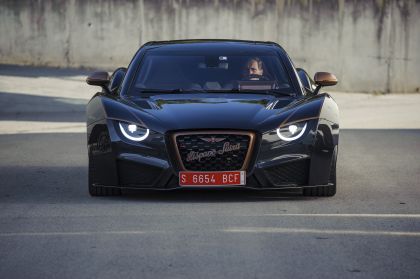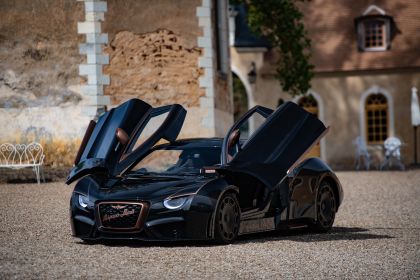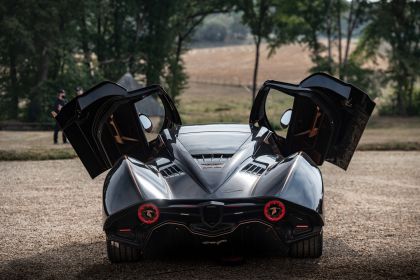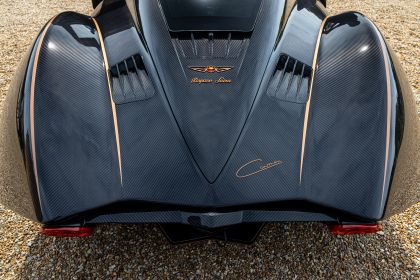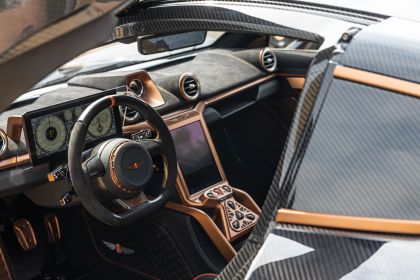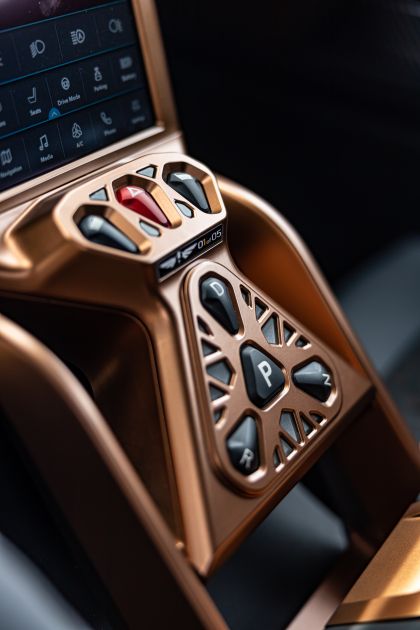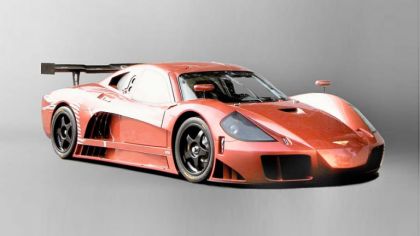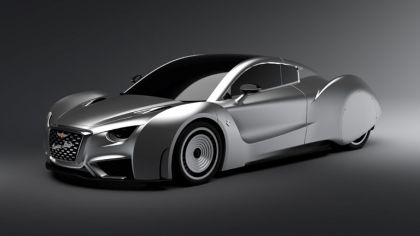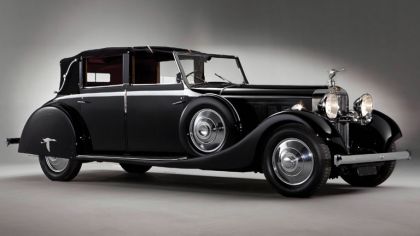The motorsport-inspired Carmen Boulogne pays homage to Hispano Suiza's competition heritage. Building on its sibling’s substantial credentials, the Carmen Boulogne boasts 820kW (1,114PS) up by 70kW (95PS); more speed 290km/h (180mph) up by 40km/h (25mph) and a 0-100km/h time of under 2.6 seconds.Utilising the Carmen's expertly engineered chassis and powertrain technology, the Carmen Boulogne delivers a blend of exhilarating power, exceptional luxury and elegant design.Born of the brand's 'Unique Tailormade' department in Barcelona, the infinitely-customisable Carmen Boulogne embodies the sporting spirit of Hispano Suiza alongside astrong family legacy.The new sportier variant of the Carmen is the next stage in the evolution of the resurgentSpanish luxury car brand.Designed, developed and manufactured in Barcelona, the fully-electric Carmen Boulogne sharesits sibling’sclassically-inspired design,but applies sportier styling and showcasesthe extent of customisation available to the five customers who will own one of the hyper-exclusive models.Combining its enhanced, fully-electric 820kW(1,114PS) powertrain with a bespoke super-stiff carbonfibre monocoque, stiffer double-wishbone front and rear suspension,and torque vectoring, the Carmen Boulogne delivers exceptional dynamics, with a focus on thrilling performance. With such prodigious power, and a kerb weight of 1,630kg, the new variant has world-class performance capabilities: 100km/h is reached in under 2.6 seconds, while the top speed is 290km/h.The car’s exquisitely-precise carbon fibre bodywork is proudly displayed beneath a clearcoat varnish, which emphasises its aggressive sportiness while retaining the Carmen’stimeless elegance.Inside, the Carmen Boulogne variant is distinguished from its sibling through the use of suede or black Alcantara across the bulkhead and door panels.The car’s design, engineering and production has been undertaken in Barcelona by a skilled team of highly-experienced expertsfromHispano Suiza and QEV Technologies–acompany that specialises in electric powertraindevelopmentand motorsport engineering. The Hispano Suiza Carmen Boulogne will cost from €1.65m (plus taxes). The five special edition Boulogne variants join 14 Carmen or Carmen customised models to complete the total 19-unitproduction run, with the first customer taking delivery in 2022.Prospective customers can now register their interest to purchase one of the hyper-exclusive models. A product of the brand’s ‘Unique Tailormade’ operation, the Boulogne features design enhancements that reference Hispano Suiza’s racing vehicles from the 1920s, while building onthe Carmen’s exhilarating performance and exceptional luxury.The Boulogne moniker dates back to 1921 and the George Boillot Cup, in which Hispano Suiza competed with a performance-focused version of the company’s H6 Coupé. The endurance race saw competitors battle for victory for more than 3.5 hours, on the roads around the French town of Boulogne. Hispano Suiza achieved three consecutive race wins, with drivers André Dubonnet (1921), Paul Bablot (1922) and Léonce Garnier (1923) driving specially-modified versions of the Hispano Suiza H6.
Purposeful sports styling, builds on Carmen’s contemporary reimagination of a classic shape Hispano SuizaThe Carmen’s styling is deliberately provocative, intended to generate an emotive reaction, and to be instantly recognisable.The Carmen Boulogne extends this theme,adding a layer of menacing mystique through its exposed carbon fibre –deeply polished beneath a lustrous clearcoat.Emphasising its enhanced performance capabilities, the new model features copper-coloured livery that highlights the car’s aerodynamic form. It makes use of the original model’s large air inlets that flank the grille, sittingabove a‘floating’ front splitter, which channels air under the car.The Carmen Boulogne carries the same semi-circular combination headlamps and aggressive ‘frown’ as its sibling, but is clearly differentiated by its dominating copper-coloured grille.Visual theatre is a key element of the Hispano Suiza DNA. Before even entering the car, the driver and passenger are provided with a dramatic performance as the scissor doors rise and pivot in one smooth, elegant movement. With the doors closed, the Carmen’s distinctive aerodynamic teardrop profile is revealed. Here, a key styling element that differentiates the Boulogne variantappears where the concave bodyside scoop ends,just as the dramatic rear haunch takes over–the rear wheel is exposedrather than being shrouded.This unobscuredview of the 20-inch rear wheels serves to emphasise the new model’s sports focuswhile also enhancing cooling of the carbon ceramic brakes (discs: AP Racing 380mm x 34mm; calipers: AP Racing Radi-CAL -6 pistons). Newly-styled wheels are proudly displayed with 10curved trapezoidalshapes set around the outer rim and a series of concentric circles framing the central Hispano Suiza emblem. With front and rear wheels on show, the Carmen Boulogne is visually more balanced than its Grand Tourer sibling, and benefits from a more menacing stance –a characteristic emphasised by its black carbon fibre bodywork.Viewed from the rear, the taughthaunchesthat arch over the covered rear wheelsalso feature copper-coloured detailing. They taper slightly,flanking a dramatic narrowing of the roofline and rear screen that ends in a distinctive,sharp,rear-facing point–the trailing tail of the teardrop. The circular rear combination lamps feature the signature Hispano Suiza stork graphic within the rear-light cluster. When seen from an angle, the indicator pulses along the length of the rear-lamp conescreating anarresting visual spectacle.The performance focus of the Carmen Boulogne capitalises on the car’s low drag coefficient (Cd 0.325), lowerthan the Porsche 918 Spyder (0.34), Koenigsegg Agera R (0.37) and Ferrari F12 (0.33).In accelerating to its top speed of 290km/h, it makes full use of its streamlined form, combined with the front splitter, flat floor and rear diffuser that work in unison to reduce lift.Exquisite and luxuriousinterior blendsmodern technologies with contemporary design cuesThe passenger cabin of the CarmenBoulogne is a more contemporarytake on Hispano Suiza’s blend of premium quality materials and classic design cues. The Carmen’s refined and luxurious wood trim is replaced by suede or black Alcantara, while chrome trim is changed for anodised metal in a striking Orange Tulipwood colour.Awaiting the occupants inside the car is acombination of the finest leather and Alcantarathat is used to trim the heated, 3D / 6 motionpower-adjustable carbon fibre composite seats, as well as the door panelsand roof lining. All upholstery is hand-trimmed and hand-sewn in-house at Hispano Suiza’s Barcelona assembly facility, helping ensure that the driver and passenger are cosseted withinan authenticallysumptuous environment.Such is the focus on the ultimate ownership experience, each Carmen Boulogne is almost infinitely customisable via the brand’s ‘Unique Tailormade’ department. Buyers can pick the specific shade of leather, the set-up of the interior mood lighting, and can even specify a custom-perfumed interior, developed with the buyer to ensure the car is aligned perfectly with their preferences. The artisan craftsmanship that is apparent throughout the interior retains a direct lineage to the brand’s history.For example, the dash reflects the characteristics of the CarmenBoulogne’s predecessors, with anodised Orange Tulipwood-coloured metalworkperforated byauthentic toggleswitchgear for reassuring mechanical tactility.The clockfaceat the centre of the dashfeatures a Swiss mechanism with design and development by a Spanish watch maker. Itechoes the position and status of the timepieces that featured in the brand’s earlier cars. Similarly, the triangular gear selector is a direct reference to the art deco steel triangle that featured on the dash of Hispano Suiza’s in the company’s historic models.While the style is unashamedly retrospective, the technologies employed deliver the best experience possible for occupants. Ambient LED lighting strips are hidden along the door panels and in the footwells to ensure that the interior is a welcoming and inviting space.The steering wheel spokes feature smartphone and multimedia controls, whilea highly-intuitive user interface sits at the centre of the driver-focused infotainment console.A high-definition,10.1-inchtouchscreen displayallowsowners make infotainment selections and configure vehicle settings with ease. The screen is also where video output from the rear parking camerais presented.High-fidelity audio is delivered by sixpremium speakersand a subwoofer,providinga unique 360-degree audio experience.A dedicated Hispano Suiza mobile app enables owners to remotely set cabin temperature, operate the lights, and set the alarm, as well as monitoring the battery charge status.Advanced electric powertrain delivers motorsport-inspired performanceAchieving enhancedperformance,to elevate the Carmen Boulogne to even greater heights,was the primary focus for the Hispano Suiza technical team. Inspired by the brand’s race-winning successes of the 1920s, the engineersset out to boost the Carmen’s exceptional power even further.Building on the Carmen’s substantial credentials, the Carmen Boulogne boasts 820kW (1,114PS) up by 70kW (95PS) on its sibling. With a longer-ratio gearbox, a new silicon carbide transistor, and stiffer suspension, the performance variant has a higher top speed 290km/h (180mph) up by 40km/h (25mph), and boasts a 0-100km/h time of under 2.6 seconds.The CarmenBoulogneis powered by two 410kW permanent-magnet synchronous motors (PMSM), one for each rear wheel. Each motor’ssignificant torqueis controlled through sophisticated torque vectoring systemsdeveloped in-house.From 0-6,500rpm, the motors are capable of 1,600Nm maximum torque, enabling the car’s blistering acceleration and seemingly endless pulling power. The high-energy battery pack is T-shaped, running as a central spine of the car and behind the seats. It also serves as a tuned mass damper (TMD), providing stability and reducingstructural vibration.The Lithium Ion polymer battery pack boasts an available capacity of 80kWh.High-efficiency mechanical and electric components give a total energy loss from the battery to the ground of less than 10%, maximising vehicle range, which is targeted to exceed 400km.The battery pack –made up of 700 cells–wasdesigned and produced entirely in-house, including a complete temperature control system to ensure the cells can operate optimally.The battery monitoring system ensures stable charge and discharge performance and delivers therequiredsafety strategies.The new model also features >80kW DC Fast Charging capability, requiring just 30 minutes to charge from 30-80% via a CCS2 Fast Charger. It also features CHAdeMO and GB/T charging options.
The battery and electric powertrain components are liquid-cooled via three front radiators: one under the hood at the front of the carfor battery cooling, and one each side, inboard of the front wheel arches,for cooling powertrain components. The threefront air intakes provide airflow to help cool the electric drivetrain system and battery. The location, size and diffuser-style shape of these intakes, together with split planes, distribute the air in the radiator’s core to achievethe optimal balance of drag and high air flow across the radiators. The outletsin the hood that expel air from the front radiator,and those in the front wheel arches thatexpel air from the side radiators,have been carefully designed and located to minimise drag.Battery heat expulsion is controlled by the front central radiator and condenser. The battery thermal management system uses a passive heat exchanger (radiator) and an active cooling system,which sharesitsrefrigeration cycle with the passenger cabin’s air conditioning. Also, a PTC (Positive Temperature Coefficient) heater warmsthe battery in cold conditions. The car’s Electronic Control Unit (ECU) software manages all vehicle power and control strategies, continuously interrogatingmyriad data streams and instructionactuators to control vehicle behaviour. Thesestrategies are all developed and tested in-house by Hispano Suiza software engineers. A complex network feeds a huge amount of data to the ECU at a rate of up to 1,000 samples per second.Data isalso fed via the cloud to the Hispano Suiza back office infrastructure to ensure that vehicle status and condition is monitoredby Hispano Suizain real time to ensure ultimate reliability. This4Gfunctionality also enables eCall emergency services as required.Hispano Suiza’s production partner–QEV Technologies –has extensive experience in developing electric vehicle powertrain technology, specifically for teams participating in FIA Formula E and FIA Electric Production Car Series (EPCS). As such, QEV Technologies brings unprecedented levels of engineering know-how to the Carmen Boulogne’s electric powertrain, contributing to its exceptional performance, efficiency, reliability and safety.Bespoke carbon fibre monocoque chassisThe Hispano Suiza Carmen is one of the most carbon fibre intense carsin the world. Carbon fibre composites are employed extensively throughout the vehicle, and account for the vastproportion of vehicle structures. Even inthis,the most elementary structure of the Carmen, Hispano Suiza has created a unique work of art: the hand-laid carbon fibre deployed for the monocoque chassisis specifically oriented in a mirrored opposing weave pattern. This results in aforward-facing directional arrowshape down the centre-line of the car from back to front.
